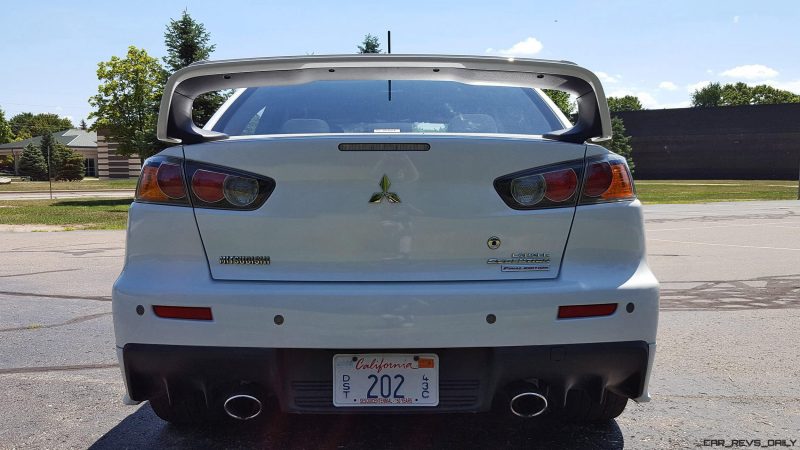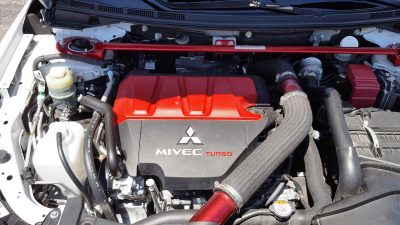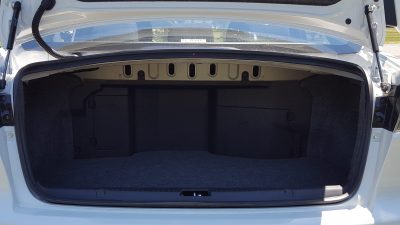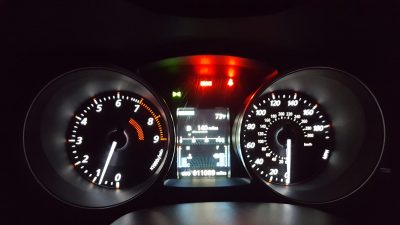EVO =
“the gradual development of something, especially from a simple to a more complex form.” That definition best describes the Lancer Evolution, a car that originally started out life as the mediocre Lancer compact sedan, but would gradually transform into a performance car bargain thanks to the efforts of Mitsubishi engineers. Its rivalry with its Asian arch nemesis the Subaru WRX rewrote the performance car genre, and inspired other automakers to follow suit with entries such as the Dodge Neon SRT-4 (and its horrible follow up the Caliber SRT-4) the Ford Focus ST, and the Volkswagen Golf R. Sometimes however, evolution comes full circle, and its time to eventually say goodbye. Does the 2015 Lancer Evolution Final Edition serve as the perfect tribute to one of the most successful innovators in automotive history? Or does it come up short?
The exterior styling of my Diamond White tester still looks sharp, and does a good job embodying the aggression that helped make the Evolution a hit with young enthusiasts. The rear spoiler on my tester also amps up the aggression though it also has the unfortunate side affect of chopping rear visibility, which is mainly due to the position of the top part of the spoiler. The Final Edition also follows the traditional Evolution X script when it comes to weight savings with the hood, front fenders, and roof made out of lightweight aluminum. Final Edition models like my tester stand out thanks to a blacked out front grille, as well as black chrome Enkei wheels, and Final Edition badging. Overall the look is much more aggressive than the path that recent Subaru WRX models have taken, and is a reminder of a time when bold looks were just as important as big performance numbers.
The interior of the Evolution also has a driver oriented feel, but unfortunately, the rigors of time have not been very kind to the cabin. Material quality is sloppy with plastics that look like they were placed as an afterthought throughout the cabin. The cloth seats in my tester were comfortable with good side bolstering, but disappointingly lacked support in other key areas which was noticeable during spirited driving.
The infotainment technology in particular is a bold example of its age with the system in my car lacking navigation and a backup camera which is odd in a $40,000 plus car. However despite the bulk of the cabin being stuck in a time warp, there are still some good things to be found. The gauges for example are very comprehensive and are within good view of the driver, while the infotainment system makes up for its lack of polish by offering a simple to understand layout and decent speed between inputs. Trunk space is on the tight side, but it still offers plenty of room for groceries and other small cargo.
Performance for my Final Edition tester comes from the same 2.0 liter turbocharged four cylinder that has become a crucial backbone of the Evolution driving experience. Typically good for 291 horsepower, Final Edition models like my tester boast several tweaks to the engine which helps increase overall horsepower to 303 ponies while also increasing overall torque to 305 lb-ft. These figures are somewhat tame when compared to many newer performance cars, but they still help the 3,527 lb Evolution get off the line in a hurry with mid range torque coming in like a sledgehammer in second and third gear.
This engine is paired with Mitsubishi’s best transmission, but in an era where six and even seven speed manual gearboxes are becoming the new normal, the Final Edition stubbornly hangs on to an old school five speed unit. While the transmission’s lack of an extra gear occasionally proved annoying, the five that were present proved to be more than adequate, with the transmission delivering crisp feedback through its tightly spaced gears. The one lone exception was reverse which takes a delicate hand and some practice to engage without grinding the gears.
Handling was spot on with the sticky performance tires providing loads of grip which helped the car corner with the tenacity of a spirited terrier. The steering is a tad over-boosted for this type of car, but it still provided solid road feel and sharp responses during spirited driving.
The suspension of my Final Edition tester featured Bilstein shocks, and they helped virtually eliminate bodyroll while also delivering commendable amounts of comfort. The stiff springs do shed this facade at times though, with the car sending back jarring vibrations to occupants when going over road joints and dips. Braking was strong with the Brembo adorned brakes delivering solid feel and equally potent bite, which helped bring my tester to a halt with little to no nose dive.
Pricing for the 2015 Mitsubishi Evolution Final Edition begins at $37,995 with my lightly optioned tester ringing in at $41,295. This pricing is a tad steep considering some of the key features that it’s missing, but it makes up for it by offering exclusivity with Mitsubishi only bringing 1600 units to the U.S. (my tester was #73 out of this batch.) In addition, this car also serves as a glimpse into an era when performance and rally heritage were key players in the Mitsubishi board room.
The best Lancer Evolution ever?
Oh yes.
Both enthusiasts and the performance car segment itself will mourn its absence from the marketplace.
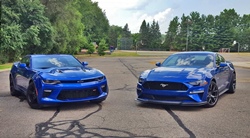
Carl Malek has been an automotive journalist for over 10 years. First starting out as a freelance photographer before making the transition to writing during college, his work has appeared on numerous automotive forums as well as websites such as Autoshopper.com.
Carl is also a big fan of British vehicles with the bulk of his devotion going to the Morgan Motor Company as well as offerings from Lotus, MG, and Caterham. When he is not writing about automobiles, Carl enjoys spending time with his family and friends in the Metro Detroit area, as well as spending time with his adorable pets.




